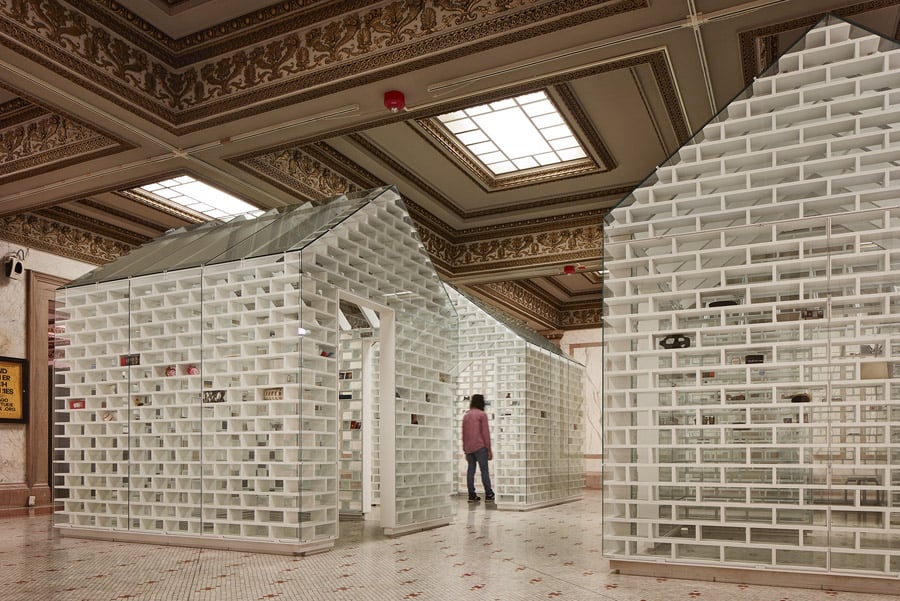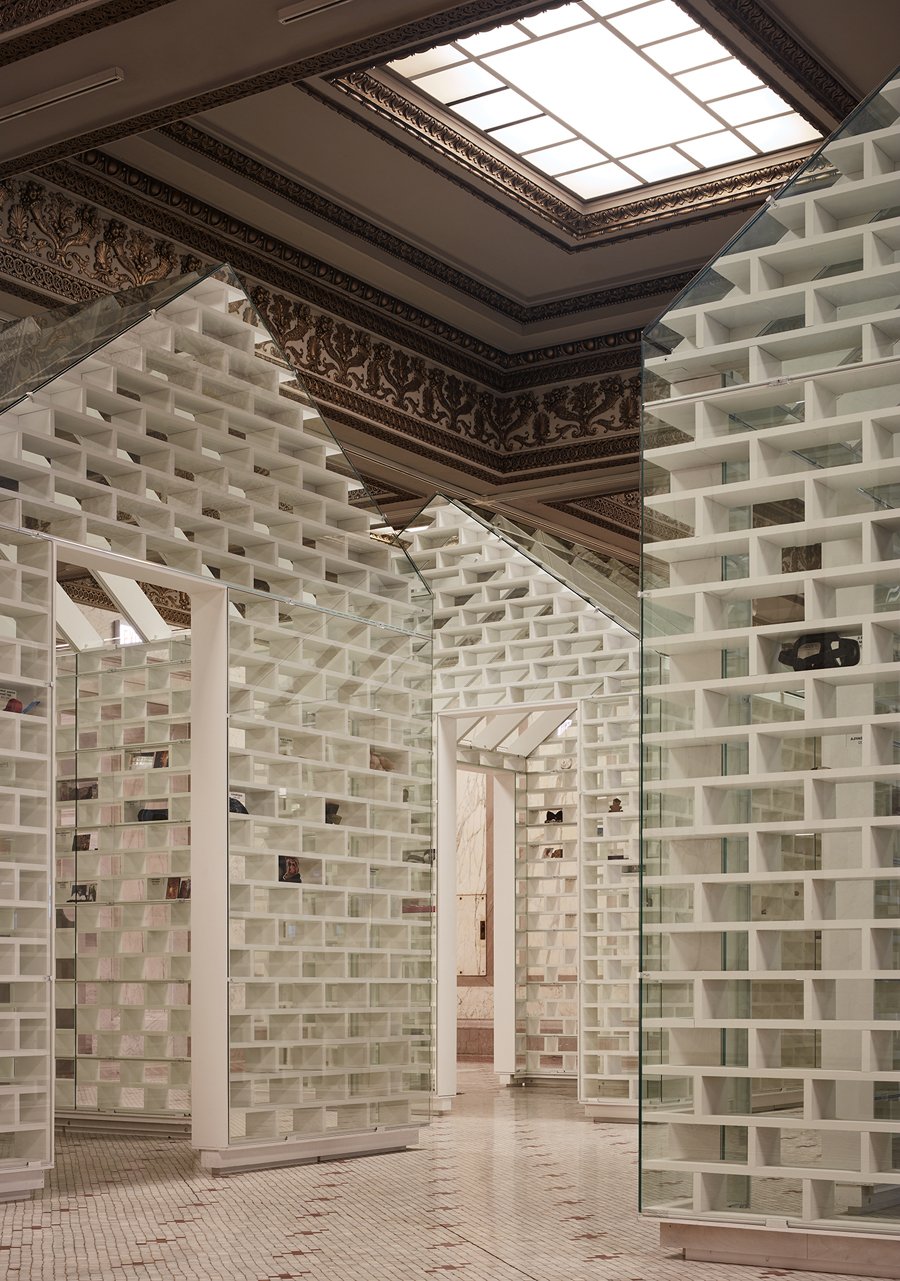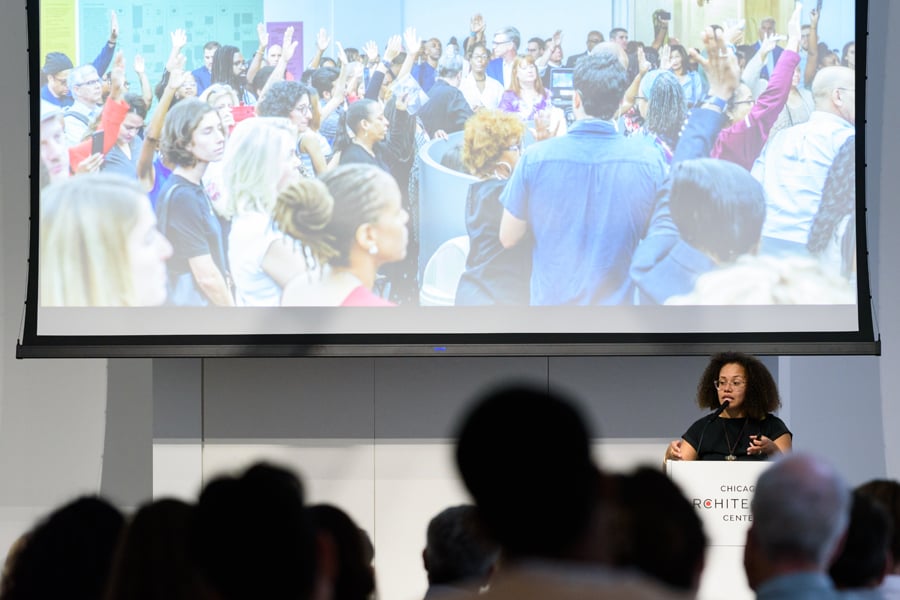
September 24, 2019
At the Chicago Architecture Biennial, MASS Design Group Proposes a Memorial to Victims of Gun Violence
On Saturday, senior associate Jha D. Williams talked through the project’s themes at the Chicago Architecture Center.

In recent years, the work of MASS Design Group has been crucial in advancing questions of how to represent collective trauma and the need for healing. The Boston-based nonprofit’s design for the National Memorial for Peace and Justice is a case in point. Opened last year in Montgomery, Alabama, it’s a memorial that eclipses the conventions of historical narrative: Exhibits like a soil collection, drawn from the grounds of former lynchings, offer a model for present-day memory-making that roots people in the physical dimensions of violence, while still making space for growth and change.
In a talk given at the Chicago Architecture Center this past Saturday, MASS senior associate Jha D. Williams presented some of the firm’s more recent projects, focusing particularly on the Gun Violence Memorial Project, a prototype of which is currently housed in the Chicago Cultural Center as part of the Chicago Architecture Biennial. Williams’s talk gave valuable context to an initiative that manages, even in its initial form, to realize a range of important questions around gun violence in America, namely: How do we give spatial dimension to a crisis that’s touched nearly half of all Americans directly?
A work in progress, the installation nevertheless emerges as a fully realized artistic statement. Four miniature glass-brick “homes” are accompanied by audio and video interviews with victims’ family members. Each home is constructed of 100 hollow bricks, meant to symbolize the daily death toll in the U.S. The bricks also act as reliquaries, containing precious objects and mementos, such as a high-school graduation ribbon worn by a young man killed six days after the ceremony. In this way, the memorial connects the intimacy of such unexpected losses to the untreated epidemic still ravaging the nation. According to Williams, MASS used the 1987 AIDS Memorial Quilt as precedent, a natural inspiration for the project at once heartrendingly intimate and politically potent.
The seeds for the Gun Violence Memorial were sown at the dedication of the National Memorial for Peace and Justice opening. Annette Nance-Holt and Pamela Montgomery-Bosley, cofounders of advocacy group Purpose Over Pain, approached MASS about their desire to honor victims of gun violence, including their own teenage sons. With Nance-Holt and Bosley in attendance at the exhibit’s opening last Thursday, Williams spoke to the sense of responsibility she felt towards them and the countless other families present.
“I won’t be proud until they tell me I can be proud,” Williams said. “I won’t be proud until they say we did their families and loved ones justice.”
The act of collecting the objects for the Biennial installation was itself an emotional experience for Williams’s team. Over six collection days—four in Chicago, and two in Washington D.C.—Williams and her MASS colleagues listened to families tell their stories of grief. With conversations ranging from five minutes to nearly an hour, the group “cried, and laughed, and cried some more,” Williams said, a loving act of attention that helped ensure each object was treated with reverence. By letting visitors share objects to be added to the unfinished homes in late October, MASS hopes the exhibit will invite further healing for those affected by the work.
While Williams acknowledged that art alone is rarely enough on its own to spark widespread change, she shared hope that the future of the memorial—there are tentative plans for a scale-up version to be permanently installed in Washington D.C. next year—will help inform tangible policy transformations.
“We are convinced that without spatializing these figures, without giving a name to the personal dimension of the problem, we cannot fully lay these burdens down,” Williams said. “If we do not have the spaces to virtualize and to evoke the traumas we’ve experienced, we may fail to embed deep in our memories the tools we need to seek to inhabit, and without spatial intervention, some of the most important social transformations may not be realized.”
You may also enjoy “Chicago Architecture Biennial Preview: Activism.”
Would you like to comment on this article? Send your thoughts to: [email protected]









